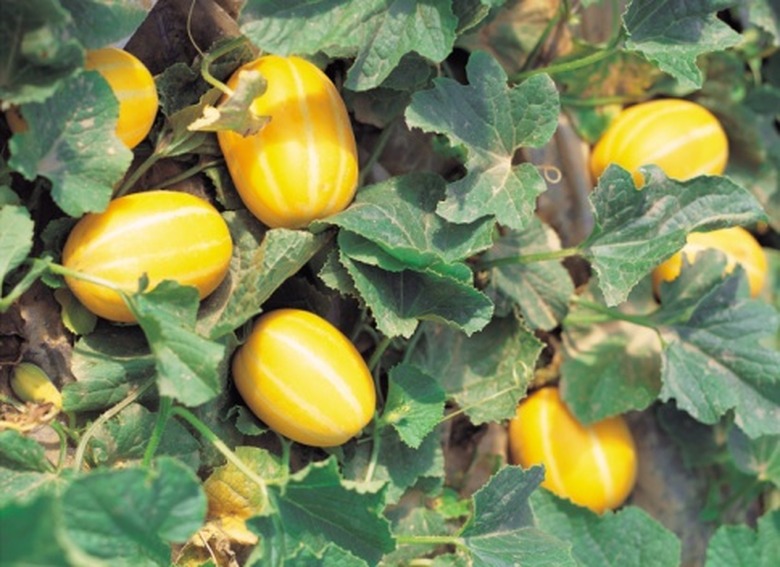How To Grow Melons Vertically
Things Needed
- Sturdy wood or metal stakes or posts, 6 to 8 feet long
- Hammer or mallet
- Galvanized metal wire
- Wire or plastic mesh fencing
- Wire cutters or shears
- Staple gun and staples
- Pegs such as tent pegs
- Plant ties
- Plastic mesh bags such as onion bags
Melons are a tasty addition to a backyard garden, but melon vines take up a lot of space. In a small garden, just two or three melon vines could overrun the entire area. A solution to growing melons in small spaces is to grow them vertically on wires or on a trellis. Trellised melons can even be grown in containers on a patio or balcony. Building a sturdy trellis to support melon vines and fruit takes some time, but it is well worth the effort.
Step 1
Calculate the length of trellis you will need. Melon plants need to be spaced 2 feet apart, so to grow four melon plants you will need 6 feet of trellis. Mark the location for your trellis in the garden using pegs. You will need one support post every 3 feet, plus one post for each end, so for example, for 6 feet of trellis you would need three posts.
- Melons are a tasty addition to a backyard garden, but melon vines take up a lot of space.
- Melon plants need to be spaced 2 feet apart, so to grow four melon plants you will need 6 feet of trellis.
Step 2
Drive the posts into the ground at least 1 foot deep with a hammer or mallet. Ensure the posts are firmly embedded and will be able to support the weight of the plants and fruit. If you have light, sandy soil you may need to drive the posts further into the ground.
Step 3
Run a length of galvanized wire from the ground, 3 feet away from one end post, across the top of each post, and back down to the ground 3 feet away from the other end post. Anchor the ends of the wire to the ground with strong metal or plastic pegs such as tent pegs.
Step 4
Cut a piece of fencing the length of your trellis. Staple the fencing to the support posts so that the bottom of the fencing is 1 or 2 inches above the level of the soil. Use at least one staple every foot. It doesn't matter if the fencing does not reach to the top of the support posts, or is a little bit taller than the support posts. If the fencing is more than 6 inches taller than the support posts, trim it down even with the top wire.
- Drive the posts into the ground at least 1 foot deep with a hammer or mallet.
- Staple the fencing to the support posts so that the bottom of the fencing is 1 or 2 inches above the level of the soil.
Step 5
Plant the melons along the base of the trellis 2 feet apart. Water regularly during dry spells. Some varieties of melon plants will cling to the fencing on their own. Others will need to be loosely tied at intervals with plant ties.
Step 6
Support the fruits by placing each developing melon into a plastic mesh bag (such as the kind onions are sold in) and tying the bag to the trellis' top wire. Check the fruit regularly to ensure it is not out-growing its bag, and replace the bag if necessary.
Tip
Choose smaller varieties of melons to grow vertically. Larger melons such as watermelons need very sturdy support for both the vine and the fruit, which might be expensive or difficult to install in a garden. Cantaloupes, muskmelons, and honeydew melons can grow vertically on a trellis.
